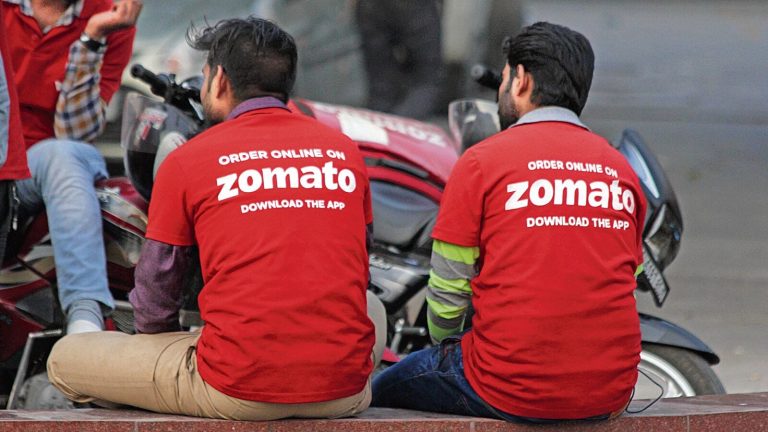Zomato says it doesn’t see a future for ultra-fast food delivery, and cited poor customer experience and limited incremental value as key reasons for shutting down its Quick and Everyday services. In its Q4 FY25 earnings call on Thursday, the company emphasised that the model is not aligned with its long-term vision and is no longer a strategic focus.
The management explained the rationale behind shutting down its ultra-fast food delivery service, Quick; saying that the initiative aimed to cut delivery times drastically, but the company found that this came at the cost of customer experience and operational feasibility. Importantly, the expected boost in demand didn’t materialize.
“…I think Quick was an attempt to bring down the delivery time from the average—let’s say 30 minutes for the platform—to 10 minutes. What we realized is that it’s extremely hard, and we don’t see any incrementality in demand by doing that, especially given that customer experience is poor…Our view is that we should try to bring that 30 minutes down to maybe 20–25 minutes over time by making our overall logistics fleet and delivery system more efficient. Those are the gains we want to chase now, rather than trying to build an extremely quick service, which, without end-to-end control on the supply chain, we think is extremely hard to do,” said Akshant Goyal, chief financial officer at Zomato.
This shift reflects a more sustainable and scalable approach, especially in the absence of full control over the supply chain, and the absence of any meaningful uplift in demand.
Rising competition
Goyal also explained its decision to shut down Everyday, noting “…given that it’s a more operation-intensive business, with a different business model, etc., we just didn’t see the value in continuing to run that when we don’t really see an opportunity to grow beyond a certain scale.”
Goyal further acknowledged the structural limitations of its marketplace model, particularly in contrast to quick commerce, where end-to-end control over customer experience is more feasible.
“We are a marketplace business. So unlike the quick commerce business, we don’t control the end-to-end experience for customers. And I think in some ways, on these three metrics—assortment, delivery times, and affordability—as a business, we’ve not been able to actually make a meaningful dent on these three vectors, despite trying multiple things in the last one or two years. But the eventual answer to driving more growth than what we’d see without any effort lies in breaking through one or more of these vectors…,” Goyal added.
Albinder Dhindsa, founder of Blinkit, also pointed to intensifying competition as a key factor stalling margin growth. It faces challenges not only from established players but also from new entrants, with pressure coming in many forms—heavy discounting, aggressive marketing campaigns, free delivery offerings, and rapid expansion of service coverage.
This multifaceted competitive landscape adds to the challenge of sustaining margins and growth, particularly in the already crowded and high-burn category like quick commerce, and also limits the company’s ability to raise delivery fees in certain regions or push for higher-margin offerings.
Strategic pivot
Zomato reported a 77% year-on-year (y-o-y) decline in its Q4 FY25 profit, with net profit falling to ₹39 crore. Revenue grew 64% y-o-y to ₹5,833 crore, driven by performances in quick commerce (Blinkit) and B2B supplies (Hyperpure). On a sequential basis, net profit dropped 34% from ₹59 crore in Q3 FY25, while revenue rose 7.9% quarter-on-quarter from ₹5,405 crore.
“I think the impact of competition is visible in the lack of significant margin expansion that we would have otherwise expected. That’s both because there are now more players in the market, and there’s obviously more competition across categories to market to the same set of customers, which is leading to some margin pressure—both in terms of being able to charge higher delivery fees in some geographies, and also in being able to sell more of the higher-margin categories on the platform,” Dhindsa added.
Goyal added a strategic shift in its expansion focus toward smaller cities, noting that a growing share of new store openings is now occurring outside the top eight urban centres.
This marks a notable pivot from earlier phases, during which Zomato had exited from 225 smaller cities in early 2023 due to subdued performance in several Tier 2 and Tier 3 cities.
Key takeaways
- Zomato has shut down its ‘Quick’ and ‘Everyday’ services, citing poor customer experience, operational challenges, and lack of significant demand as reasons.
- The company aims to optimize delivery times to 20-25 minutes using improved logistics rather than focusing on ultra-fast delivery, aligning with its sustainable growth strategy.
- Zomato faces stiff competition in quick commerce due to aggressive marketing, heavy discounting, and expansion by rivals, resulting in challenges to margin growth and delivery fee increases.
- Zomato’s Q4 FY25 profit declined by 77% year-on-year to ₹39 crore, while revenue grew 64% year-on-year to ₹5,833 crore, driven by Blinkit and Hyperpure operations.
- Zomato is shifting its expansion focus toward Tier 2 and Tier 3 cities after exiting 225 smaller cities in 2023 due to subdued performance.


